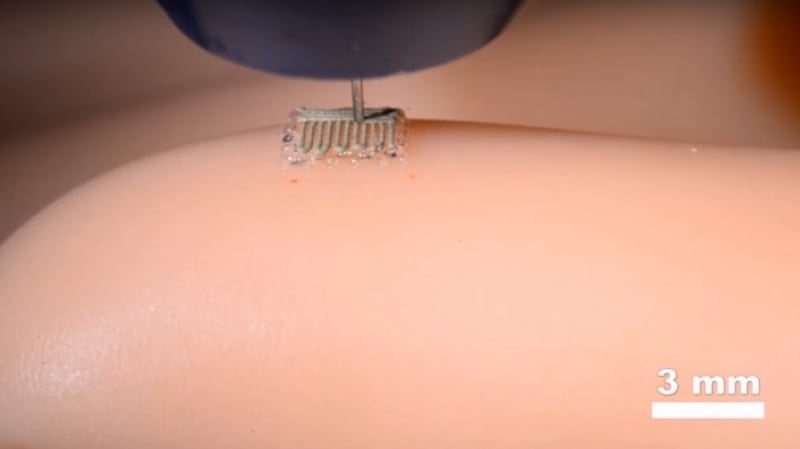Researchers have created a 3D printed sensory device which, they say, could act as a “bionic skin” for robots.
The tiny sensor, which barely fills the fingertip, is stretchable, responds to touch and can detect movement.
Built by engineering students from the University of Minnesota, the device is made up of several 3D-printed layers which the researchers call “inks”.
Each ink is directly layered on to the fingertip using a custom-made 3D printer which has four nozzles.
The base layer is made up of silicone, which offers support. The top and bottom electrodes are made using conducting ink and the middle layer contains a coil-shaped pressure sensor made from silver and silicone.
A sacrificial layer is introduced in the penultimate layer to hold the top layer in place while it sets and is later washed away in the final manufacturing process.
The end result is an electrically conductive material that is stretchable and the researchers say it could potentially be used by surgical robots.
Animated GIF – Find & Share on GIPHYDiscover & Share this Animated GIF with everyone you know. GIPHY is how you search, share, discover, and create GIFs.
“This stretchable electronic fabric we developed has many practical uses,” said Michael McAlpine, an associate professor at the University of Minnesota and lead researcher on the study.
“Putting this type of ‘bionic skin’ on surgical robots would give surgeons the ability to actually feel during minimally invasive surgeries, which would make surgery easier instead of just using cameras like they do now.
“These sensors could also make it easier for other robots to walk and interact with their environment.”
The researchers say the next step is to move toward semiconductor inks and printing on a human body.

“While we haven’t printed on human skin yet, we were able to print on the curved surface of a model hand using our technique,” McAlpine said.
“We also interfaced a printed device with the skin and were surprised that the device was so sensitive that it could detect your pulse in real time.”
The research is published in Advanced Materials.








